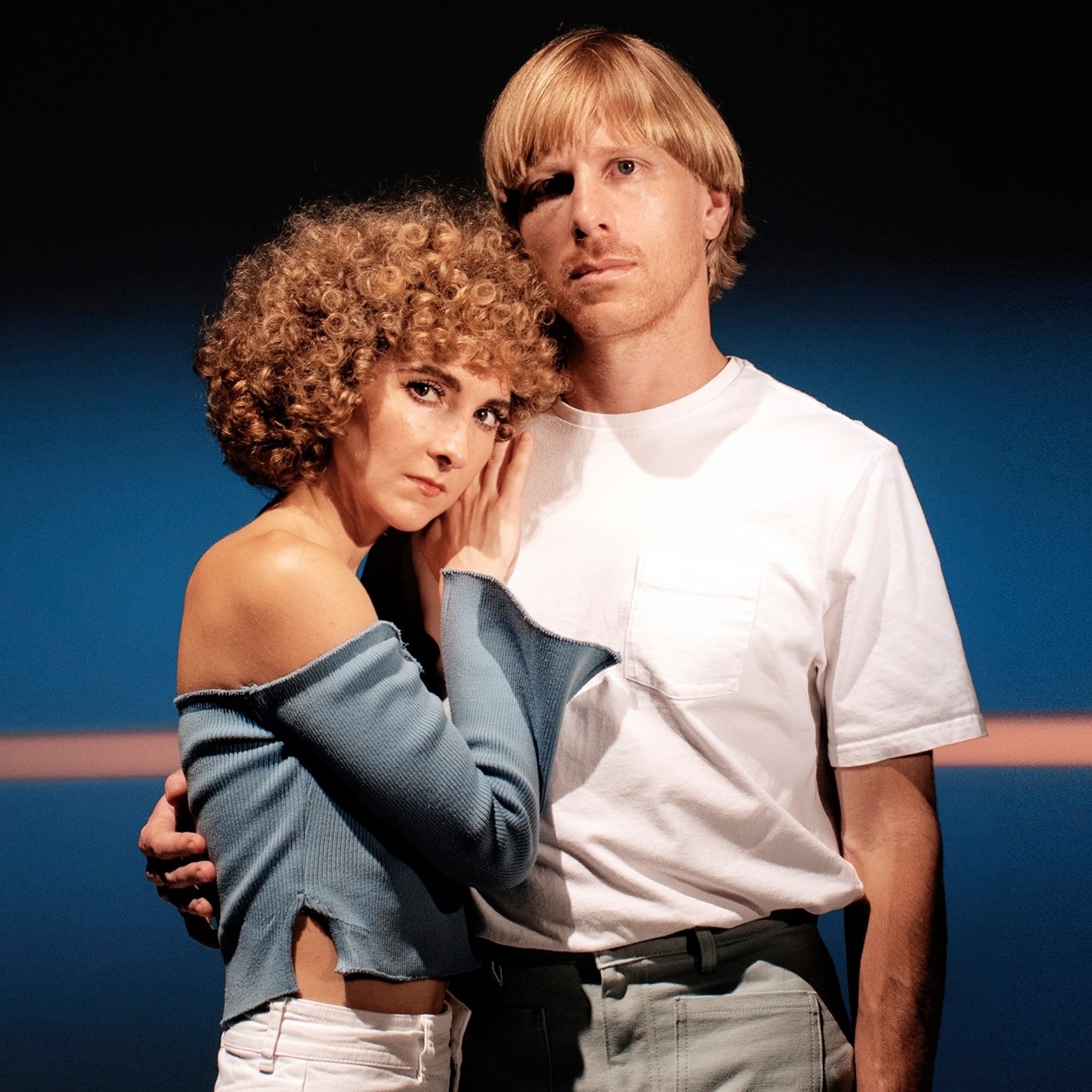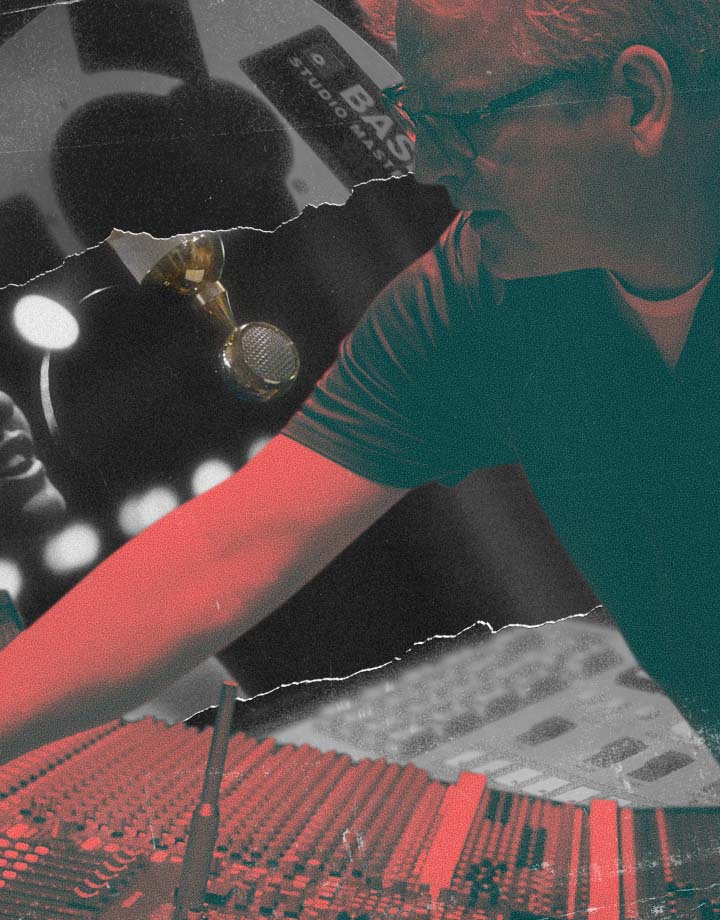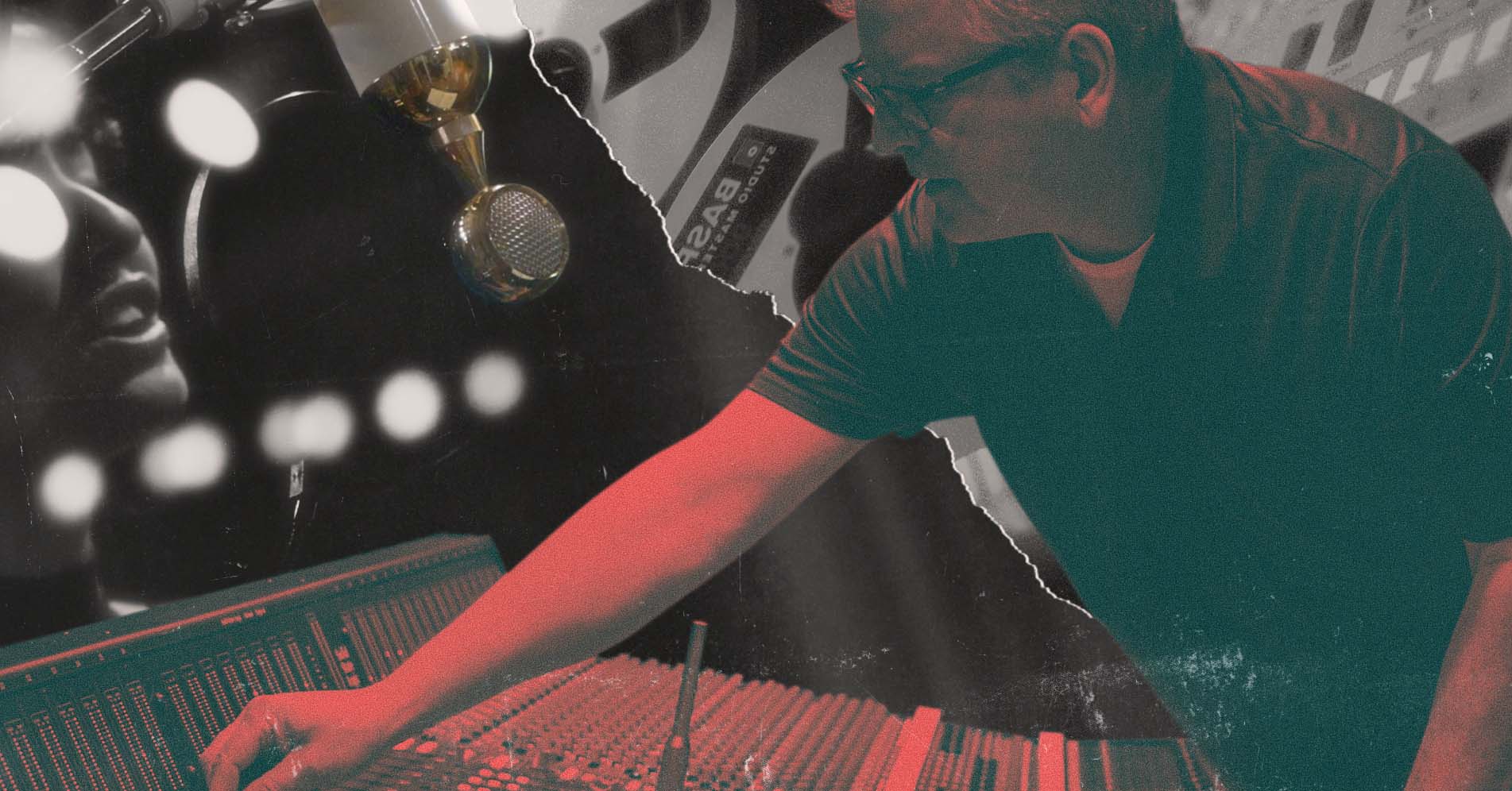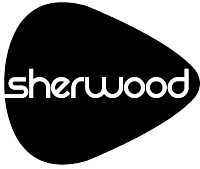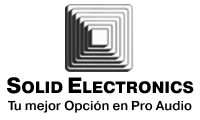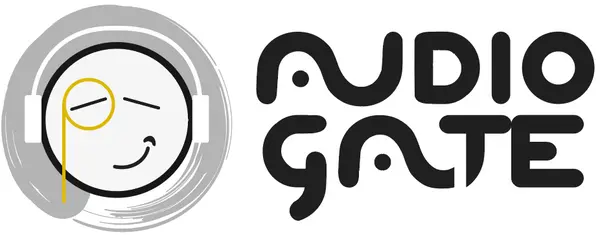Tennis is one of the hardest working, most consistent bands around. Currently five albums and two EPs into their recording career together, Alaina Moore and Patrick Riley have proven to be evolving artists and champions of DIY in all formats. Following their 2020 self-recorded and produced album SWIMMER the group has seen the addition of Soyuz microphones to their sonic arsenal. When the COVID-19 pandemic led to the cancellation of a year’s worth of tour dates, Tennis brought their new sound to the masses with a visually entrancing live stream aptly titled, In The Void. We recently were able to catch up for an excellent conversation covering their transition into production for other artists, as well as sharing insights into songwriting and self-recording, the building of a personal studio, and the truth of what it means to be a fully independent musician today.
Check out snippets from the recent streams and read our full conversation below
So first, I just wanted to say congrats on the stream! It sounded amazing and was mixed really well. I was just thinking it must have been challenging to make it not only look great but sound great too – and then having to make sure you could all monitor each other…What was your setup like for recording that?
Patrick:
Yeah, I wish the setup was more glamorous. When we first came up with this idea, I was going to bring our console. We have this really cool 60’s Studer console. We were going to bring that and all of these compressors and everything and then we realized, “Oh, with Covid, we can’t really have anyone over there running this stuff.” Fortunately, we ended up using our monitor console from touring for all the conversion. So we just used a Midas M32 and ran everything through that – just really sterile – and then we took it back to our studio and basically had a flash in the pan mix and tried to process that as fast as possible to get the live stream out.
Everything all together sounded like it could have just as easily fit on any of your records. What stuck out to me specifically was the bass and drum sound.
Patrick:
Oh, that’s great! I mean we were really worried about the drums in that room because it was all concrete.
Alaina:
We actually spent hours right before shooting the live stream moving the LED walls. At first they were set up to be 90 degree angles and there was a lot of reflection inside so we moved them out just something like five degrees to fix it. So that helped a lot with the sound.
Patrick:
It was pretty mind-blowing. How just having walls at 90 degrees and changing it to a 91 or 92 degree angle cut so much reflection out of the room. Now I’m going to pay more attention to that the next time we build out a space.
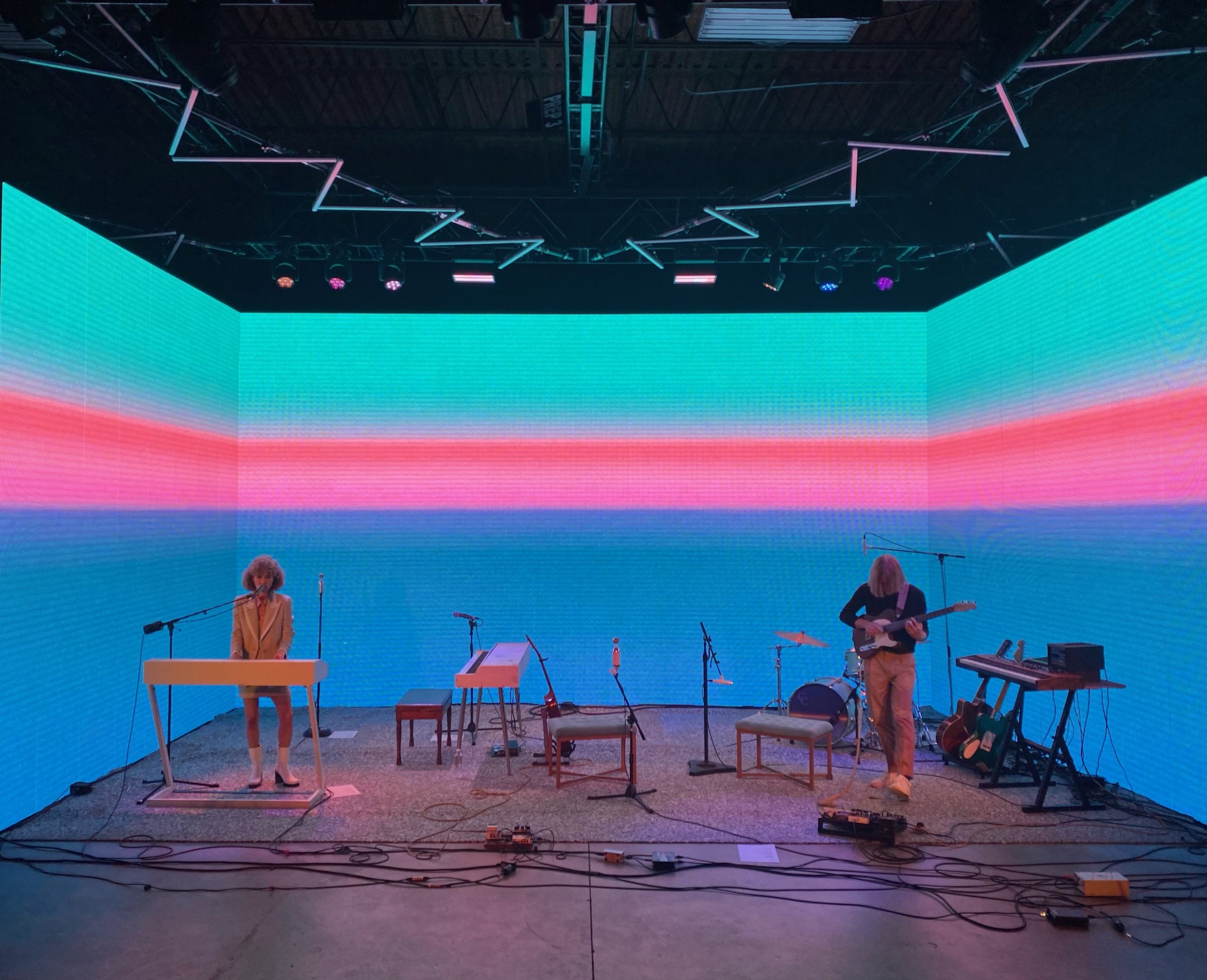
Patrick:
Kind of both. We live in a Victorian home – so it’s from the 1890s – and in the garage that was in the backyard – which we used as the control room – there weren’t square walls in it to begin with. So we did tear everything down, all the walls and floors, and we put in our own stuff.
Alaina:
We used Rockwool and insulated the floors so it was really quiet. Then the whole back wall was all foam paneling and that was upholstered so the whole back wall was soft. It ended up sounding really nice in there, being not too dead, but really, really good for listening.
Patrick
And then we had a snake buried in the backyard that went down into the basement of our house. So that was the main tracking room. We had this kind of two room set up.
Oh, that’s awesome! Yeah, I had seen the pictures of the studio on your Instagram feed and then I heard you guys talking about it as well on your TapeOp interview.
Alaina, I heard you talking about upholstering the walls with velvet and just making it a good headspace overall. Have you found a personal studio to be a refuge during a crazy pandemic time?
Alaina:
Yeah! In the span of time that our tour was supposed to be happening we’ve been able to make two records with other artists. That was really nice. We all quarantined together. And in one instance, the band moved into our house and we just all lived together. It was like summer camp and we made a whole album in two weeks. So we got a lot of use out of our studio with this unexpected downtime, so much so that it just motivated us to take the leap and move to L.A. so we can just have more access and just – more. I feel like we’re really hitting our stride in the studio and we want to keep expanding that part of our work as Tennis.
Patrick:
We’ll definitely be building out a new space, which is its own can of worms.
Alaina:
But we learned a lot about what we want from this last experience, so I think we’ll be able to modify that.
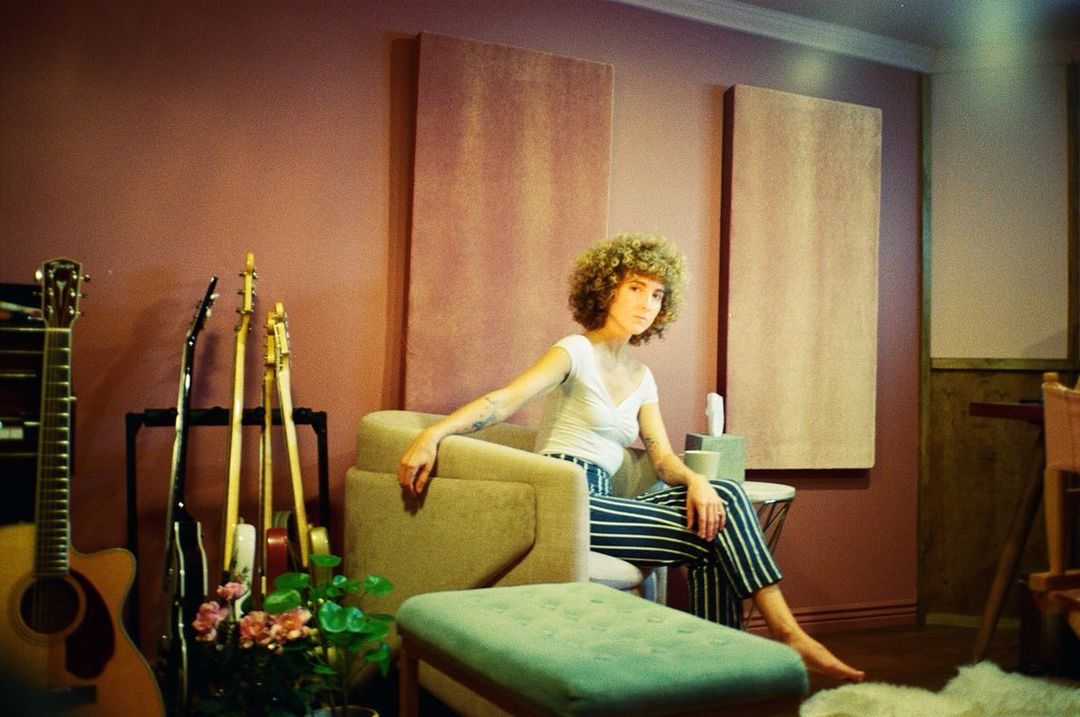
Alaina :
Sound treatment is the most important part.
Patrick:
Yeah, by far. That is the number one way to make a drum sound good in the room – just dialing in all your sound treatment.
Alaina :
You definitely don’t want to take any shortcuts on that… but I mean, that’s just science. It’s not like a secret. There are rules to that. And then I think the next thing, for me, was making sure it’s an aesthetically pleasing room you want to spend all your time in. It matters a lot to me, but I feel like it also mattered to everyone who ended up recording with us. They really appreciated that. It was a really lovely space to be in for days on end.
Patrick:
Some days we’re doing like 16 hour days or something. And if you don’t enjoy the space…
Alaina:
Sometimes making a record is not fun, it’s a slog, so having the room be pleasing to be in with a really good energy and looking nice, feels good when you’re in it. That mattered a lot to us. Then next would just be a really streamlined recording setup that obviously needs to be tailored to whatever kind of music you’re making.
Patrick:
I’m trying to get rid of our patchbay. I know it’s really ambitious to get rid of a patch bay in a studio, but that’s our dream for our next phase. Like for the drums: we really only use three or four mics on the drums ever, but I want them permanently set up and where no one touches them, going through the perfect drum chain: the preamps and compressors we want to use. Then obviously vocal mics are different for every person, but we at least we want the chain to just be kind of set up so that there’s not much decision fatigue in the studio.
Yeah, so you can focus more on getting the sounds you like right away and actually getting the performances nailed.
Alaina:
Yeah, exactly. I feel like the first thing to really kill the vibe in a session is spending hours placing mics and patching things in.
Patrick:
And you just want stuff that you’re excited about immediately.
Yeah. I agree because ultimately – and I mean I don’t want to say it doesn’t matter because obviously I work for a microphone company – but at the end of the day it kind of doesn’t. It’s more about how you’re using the mics. I’m curious about your thoughts on this too from experience in your roles both as artist and producers – but I feel people probably care more about who they’re working with and how they’re working versus what they’re working with, if that makes sense?
Patrick:
Yeah, and we learned that the hard way, I guess, from working in places like Abbey Road and Sunset Sound and all these really expensive studios. We’d come back and we wouldn’t even be happy about what happened there. And we still haven’t released a lot of that stuff. But then we’d go work with Richard Swift, who had…
Alaina:
A very underwhelming home studio in his garage.
Patrick:
This terrible year – the worst gear I’ve ever seen in a studio. But he would make stuff that was ten times better than what people were making at Sunset Sound.
It’s really nice to have good gear, but what matters most is who is using it.
Alaina:
I feel like that just speaks to the engineer. I mean, it‘s really nice to have good gear, but what matters most is who is using it. So that was a nice takeaway for us.
And just looking at your album credits, you’ve worked with several different producers across your records like Richard Swift, Patrick Carney and Jim Eno. What would you say are some other key takeaways or maybe bits of advice that have stuck with you throughout the years – whether it was ways of working, specific recording techniques, or just musical thoughts in general that you might have learned from different sessions?
Alaina:
Yeah, they all had different approaches that were unique to each of them, but they are also all drummers, first and foremost. I feel like building songs from the drums up and having drum tones inform the rest of the song’s aesthetic – like the sonic palette – and then also there’s the drum performance…
Patrick:
The core of pretty much every Tennis song is just making sure the drums are there – that we’re all excited about them and that the performance is exactly the way we want it. But yeah, I think for me, Richard Swift taught us that you don’t need the best gear in the world to get excited about what you’re recording. And heading back to that streamline thing – he didn’t have a patchbay. And that’s why I’m kind of envious of his setup, because he just had his drum chain and he loved it. And it went through a bunch of random stuff, but it was mostly like Tascam gear from the 80s. And then he had like a vocal chain that he really liked and that was it.
Alaina:
Yeah, and I feel like with Jim Eno, he had more like a surgical precision with a drum recording and performances that we learned a lot from. Also Patrick Carney had a similar approach to recording drums that I think is more informed from that pop idea of making a single – giving yourself maximum flexibility with editing; being able to take a song in a different direction if it starts evolving after you first track drums. But the thing that unified them all is a drum-first approach to recording a song.
Patrick:
And every album we produce, we still focus on the drums first before anything else.
I heard you guys speak on that before and it totally resonated with me. If you focus on drums first and you just don’t have the sound working, it’s really uninspiring. There’s nothing that will kill a song’s vibe more than just like a bland, boring drum sound.
Alaina:
Absolutely. Or the wrong tones that can take you out of the song; that are just distracting.
Patrick:
I guess the other scary thing about it is, for us, we’re always printing EQ and compression on drums – and sometimes effects, too. So it’s always a hard decision. We’re like, “OK, this is what we’re going with. This is what’s going to shape the song. “
Alaina:
Yeah, that’s actually something we got from Richard Swift: just committing. Once you get a tone that you’re really excited about, just commit to it so you can’t back out later. And I think limiting factors help move a song forward.
Patrick
Yeah. Or there’s what we call, “the Nashville treatment,” that is maybe the complete opposite, where they record everything in a way to give maximum freedom later in the process – really open – where we don’t do that.
Alaina:
Yeah, once we’re done tracking there’s not a lot left for mixing to do. It’s more just like balancing levels; the sounds are already there.
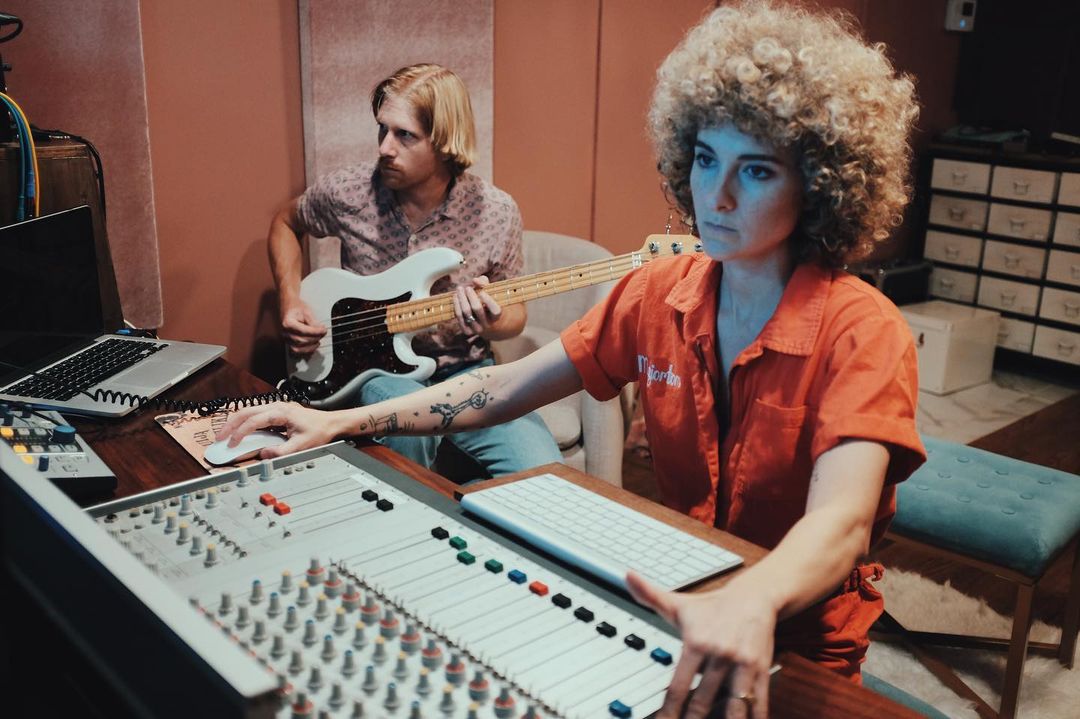
Patrick:
It would probably be drums, I would think, but I also am really involved in bass. I feel like bass is probably the next most important element, other than vocals. Drums, bass, and vocals are the core of every song for Alaina and I.
I care so much about [bass] because I feel like when you’re at a bar or something and you’re hearing the song, you almost don’t hear the guitar. You hear drums, bass, and vocals. It’s kind of the one thing that’s speaking to everyone, whether you want it to or not
Alaina:
Yeah, it’s funny. Pat’s a guitarist, first and foremost, but that’s usually the last thing we think about and the last thing we do.
Patrick:
Yeah I actually feel bad. I don’t spend any time on my guitar for any album.
It’s always like “Oh cool I’ve got five minutes to put guitar down…”
Oh man! That’s going to piss so many people off because I feel like your guitar tones on each record always sound so good.
Patrick:
Thank you! But yeah that bass – I care so much about that because I feel like that’s what – like, when you’re at like a bar or something and you’re hearing the song, you almost don’t hear the guitar. You hear drums, bass, vocals. So it’s, yeah, it’s kind of the one thing that’s speaking to everyone, whether you want it to or not.
Yeah. I heard that on the recent Esme Paterson you did Out the Door. I just saw that video for that the other day and right away I totally heard a texture and just a really nice thick coating of saturation – especially on the drums.
Patrick:
Yeah, I like that song! I played bass on that song, too.
Right on! Speaking of your records and just music overall, I will say, Tennis is a band that I’ve always used as a reference to friends for an example of how you can hear an artist’s evolution through their discography. I feel like with your records, every album has shown not just consistency, but change in the best ways in terms of songwriting, production and overall sounds. It feels like with each album or EP you guys put out you’re honing in more on the sounds and interests that happen to be inspiring you during that album cycle. Is that something that you would say you consciously work towards or does it just kind of come naturally?
Alaina:
I really appreciate hearing you say that is evident to you.
Patrick:
Every time we release an album, we’re actually terrified.
Alaina:
I mean, I imagine it to be like learning a language. It’s not like you’re inventing the language. It already exists; you’re just improving your fluency over time. And I feel like that’s what songwriting and recording has been for us. Pat has made leaps and bounds with engineering. And then on my end, my songwriting has improved significantly. I had never been in a band before Tennis – and I hadn’t written songs before Tennis – so I see a huge growth between the first songs we released in 2009 compared to something like Runner. Now, on our most recent record, there’s so much more depth and complexity. There’s so much going on lyrically and rhythmically and melodically that would have been way, way out of my range of abilities before.
I imagine [songwriting] to be like learning a language. It’s not like you’re inventing the language. It already exists; you’re just improving your fluency over time
When we first started writing, I really had no idea how songwriting worked. It’s just something that I’ve had to learn in real time. Touring helps a lot, too. When we write a record that we like and then play it live, we start to notice the weak points in the song. I feel like songs that don’t translate live aren’t the best written. The best songs work in any context. So I feel like that’s been a big takeaway. We write a record, tour it, and then that teaches us a lot about what parts of our songwriting actually hold up over time, and what needs to be refined or improved.
Awesome! You can absolutely hear it and hear the changes you guys make in arrangement, lyrics, and overall delivery. it’s definitely inspiring. And speaking of the new record, Swimmer, can we get a little geeky about the recording process on that?
Alaina: Yeah, for sure!
Since we were talking about guitar tones, Pat, you had mentioned previously that you switched to playing a Strat and recording everything in a mid-side configuration. I was wondering, how did you have that set up and how did you land on going for an MS approach?
Patrick:
Honestly, I think with every album we try and just change as much as possible, and take the way we did it in the past and evolve it. Or we want to hear something different. We were really strategic with what was going to be in the stereo field for Swimmer and what was just going to be mono and up front.
And with most things, we like the drums and vocals mono and up front. For this one we thought, “what if the guitars were all just crazy?” You know, that super wide, borderline out of phase sound that you get from using mid-side recording… and we just experimented with it quite a bit. We settled on using a Beyer M160 as the source microphone and then the 251 in figure-eight for the mid-side microphone. We just fell in love with it. Then I used a lot of Eventide as well to just kind of like figure out the stereo field or where it was supposed to sit in the track because the Eventide can get some pretty ridiculous chorus/phasey stuff.
Other than that, it was just pretty simple. Usually most of the time I’m just going straight into a Champ and then any of the chorus-sounding stuff is coming from the Eventide. At the end of the day, my favorite guitar effects come from the Eventide.
Were there any other experiments you guys tried?
Patrick:
So we did all the bass through this really cool Department of Commerce, like fifties, military tube compressor.
Alaina:
It’s literally called the Department of Commerce. It’s so ridiculously good. We cut vocals through it
Patrick:
Yeah, on the whole record all the bass was done with that. But there’s so much saturation – it’s all or nothing. You can’t really dial it back. So It just sounds like all the bass is a little bit oversaturated. But there’s some tracks where it really doesn’t sound that way once it’s all in the mix together.
That sounds awesome!
Patrick:
Yeah. Beyond that, this was the first Tennis record where Elena used a condenser mic, so yeah, she used the 251 for the whole entire record. But, fun little fact: We got the 017 TUBE afterward, and it’s actually better for Alaina’s voice!
Alaina:
Yeah. I used it on the cover of Superstar we just put out.
Oh you did? That’s super cool (no pun intended) because when I was listening to that I was curious if you guys had recorded that with the 017 at that point.
Alaina:
Yeah. We got the mics after we made Swimmer. But yeah, I love that mic. We always do a mic shootout with me before every record. Now that we had the Soyuz mics, we did another shoot out after Swimmer and it’s my favorite vocal mic.
Patrick:
It was a clear winner. That’s a pretty huge statement for us because the 251 is like, I don’t know, that’s one of the most legendary microphones.
Yeah, that’s amazing to hear!
Patrick:
I think it’s a cool thing for people to hear, too, because we used the exact same vocal chain, same preamps, everything. The Superstar cover that we just put out was the same vocal chain as Swimmer, only recorded with 017 TUBE
So I don’t know if you felt this way after hearing the mic, but just in general, how do you stop yourselves from going back and endlessly reworking your songs? How do you know when to accept when something is done and keep pushing through to make sure you keep releasing music?
Alaina:
Fortunately, we don’t have that problem. We’ve worked with people who do. We will keep endlessly tweaking a song if it just doesn’t feel right, but we are so good at committing. If we feel satisfied it’s done. We never look back and we try not to doubt our first impressions: if we liked it the first time, we just trust that it was good. We move on and we don’t doubt it. It’s only if we get into a pickle with a song where, suddenly, we can’t finish it and it’s not coming together, then we might have to go back and doubt some of our earlier choices; but it’s really out of character for us to do that. It takes us a long time to finish a song, but it’s not ever because we aren’t committing. So we’re pretty good about that.
Patrick:
We do notice the sidestep tendency of making choices that aren’t necessarily pushing the song forward and we’re really sensitive to that. We’re always trying to nip that in the bud.
Alaina:
Yeah. Because then you just feel like you’re kind of spinning your wheels and you’re not really getting anywhere. You could do that forever. And I feel like that’s the point where you just need to be honest with yourself and just say, hey, if I’m putting all of this doubt and effort into the song and I’m not getting anywhere, then the song is just not that good. Then it’s time to be less precious about the song and just write a better song next time.
That is excellent advice. So I guess, thinking again about gear, as you are getting ready to make a move to L.A., I saw your Reverb store where you had unloaded a bunch of things. Are there any pieces of gear that you will never trade, or that you know you will hold on to indefinitely?
Patrick:
Yeah, I think now that we have the Soyuz 017, that’s going to be our main vocal mic for… I don’t know… until someone makes a better microphone.
Alaina:
Yeah that and the 251. Those are both pretty crucial microphones. What’s our ribbon mic?
Patrick:
Oh yeah! OK, so we have another magic microphone and it’s an RCA 77. And I’m sure anyone who’s used those microphones knows that they are really common but they all sound very, very different: we’ve gone to other studios and used others and they just didn’t have the same effect as ours.
Alaina:
Yeah, we’re a big fan of that. Those are our three staple mics. And then as long as we can keep it functioning, I can’t imagine us ever getting rid of the Department of Commerce, the Eventide…
Patrick:
Our console is really, really amazing
Alaina:
Yeah, we love our console, although it is finicky. I’m also weirdly obsessed with having a Nord in the studio because I think it’s really important to get the sound you’re envisioning in your head as quickly as possible, rather than having like two thousand vintage keyboards.
I think it’s really important to get the sound you’re envisioning in your head as quickly as possible
Patrick:
I don’t know if this is us turning into dads, but we sold all of our vintage keyboards.
Alaina:
Yeah, that’s part of what we were getting rid of on the Reverb store. We even had this experience when we made our record with Richard: we brought my Nord and he had a ton of vintage keyboards and synths and we ended up using my Nord every time. And he kept being like, “the Nord Farfisa is better than a real Farfisa!” I think being like, “this is so much better and it’s just so easy to use” – being expedient and efficient to quickly achieve your vision – is much better than having the real, vintage thing. We used to be really pretentious about using the original vintage 60’s and 70’s gear.
Patrick:
We used to – we actually did a tour with only microphones from the 60’s.
Oh my god, that sounds like your engineer’s nightmare.
Alaina:
It was!
Patrick:
It was his idea too! He was Fleet Foxes’ front of house engineer and they did that too.
And he’s Father John Misty’s FOH – he still does this with Father John Misty, by the way, mostly 60’s microphones on stage.
Alaina:
But yeah, Pat and I just got to a point where it was like a slow awakening. But for me now, weirdly, I would rather have nothing in the studio but the Nord – that allows me to get almost anything that I want sonically – then have, like, fifty old rickety, finicky keyboards that are constantly being serviced.
Power to the Nord. I hear it!
Alaina:
I know, like so, so dad, but I don’t care. In fact, we just spent a whole month building these really extravagant cases to hide my multiple Nords. I have three different kinds now, just so it looks better on stage. But I am not going to try and lie and tell people that it’s not a Nord behind that beautiful wood paneling. It’s just a Nord.
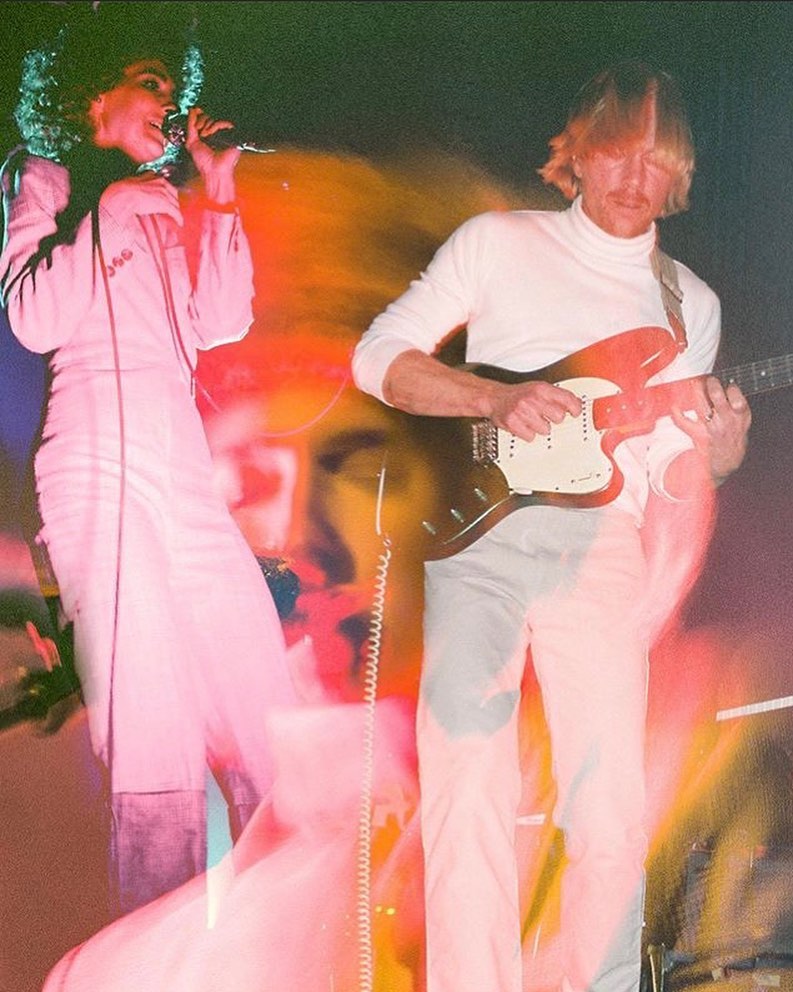
Patrick:
Yeah, I think for us it’s more of the DIY side of music, whether it be recording or even just running a record label – or tour managing. We do everything.
Like we played Stubbs right before Covid happened, and it was a great show, It was like our biggest show yet but everyone there was just kind of razzing us.
Alaina:
The crew was all laughing because we showed up in a fifteen-passenger van with a small trailer and no crew, no tour manager. And they’re like, “you’re one of only three bands ever to sell out Stubbs and not be in a bus with semis.” And the other bands were Mac DeMarco and Ty Segal.
Patrick:
So, apparently, we’re one of three. I feel like it could be more commonplace because of the unfortunate fact that to be able to create means you have to survive. And I feel like the history of music is creating situations for musicians to spend exorbitant amounts of money and go into debt to record labels, and it just doesn’t need to be that way.
to be able to create means you have to survive.
Alaina:
Exactly. Like even though we have an amazing set up now, we have recorded songs in a cement parking garage with a four-track and it’s fine and we released it. I think it’s more about just being committed to your vision and treating each song or each release as a stepping stone and just a chance to improve your craft with time. I want to lower the barrier of entry to music for people and I feel like technology’s already doing that, but as fun as it is to nerd out about gear, we also want it to be clear that you don’t need those things to be good at what you do and to make good music.
I’m really glad you brought that up. I think, speaking on behalf of other DIY musicians, it’s really great you guys have always been transparent about this and talking about the realities of what it’s like to actually have to make money creating art and music.
With Swimmer being your third release on your own label, Mutually Detrimental, what big challenges have you faced going this route and do you have any bits of advice for other DIY artists looking to self-release?
Alaina:
I have one thought – I’m curious what Pat’s is – but my first thought is that one advantage of us having, well, first worked with labels so we know what to do, but then self-releasing, is that we know how to spend money on ourselves. Our band looks different than other bands and labels tend to have more of a conveyor-belt mentality. They just have a strategy that they execute with each release. But we noticed early on that that was failing us. We’ve always had more of a niche audience, like, we don’t sell CDs, we sell vinyl; a lot of artists don’t even sell vinyl. And there are things that are normally like a slam dunk to spend money on for an artist but for us that would be like throwing money away, just lighting it on fire. So us taking the reins in that sense lets us be a lot more unconventional with the way we spend money on an album cycle; we spend it in a way that better suits us uniquely because every artist is different.
Patrick:
Maybe a good example is like billboards. We see bands smaller than us whose label has bought them a billboard.
Alaina:
And that’s a great strategy for them, but as I said, we’ve spent more money on our visual campaign and working with this long time collaboration with Luca Ventor, who does all of our artwork. So we spend more money on stuff like that with him and less on the marketing that other bands do, because we have a good reach through Instagram and YouTube, kind of organically. It’s kind of been working out for us to invest more on that side.
Patrick:
Or another funny thing that we see record labels do is spend huge amounts of money on these follower campaigns. So they boost their social media following, but then it backfires so bad because you just get all these trolls and bots waiting for you. No one wants that. And there’s, like, no interaction. I don’t know…we could talk about this for hours.
Alaina:
I mean, at the end of the day, an advance is just a loan; I feel like our approach allows us to prioritize the unique needs and reach of our band in ways that just don’t look like anybody else’s. Our unconventional release plans have been working really well for us.
You guys should do a webinar!
Alaina:
We thought about it, actually, because I do think that being strategic with a small amount of money allows you to try things out and see what is the best way to use that money to promote something. And I think there’s a general feeling that having a strategy and a business sense is kind of dirty or gross for a musician or an artist, but sadly, if you want to last and you want to make a living – so that you can pour more of yourself into your art – I think you need to get past that feeling.
Patrick:
I think it’s dirty and gross to not have a strategy and business sense because it means you don’t need money.
Alaina:
And you shouldn’t feel ashamed to focus on it. But yeah, we do want to destigmatize the business side of things. And it is a business: if you want it to be your career, it’s inevitably a business. I think artists tend to be really hands-off on that side of things. And for us, as far as the DIY ethic goes, having that bleed into our album releases and our business strategies has allowed us to survive, especially during an insanely shit year like this, with Covid and our whole tour being canceled. The fact that we are our business managers, our label managers, has allowed us to tread water and survive another day: because we are in charge of our future and because we’re so intimately involved in all aspects of our career, we can survive this.
Discover More From Tennis Here: https://tennis-music.com/
TIDAL
